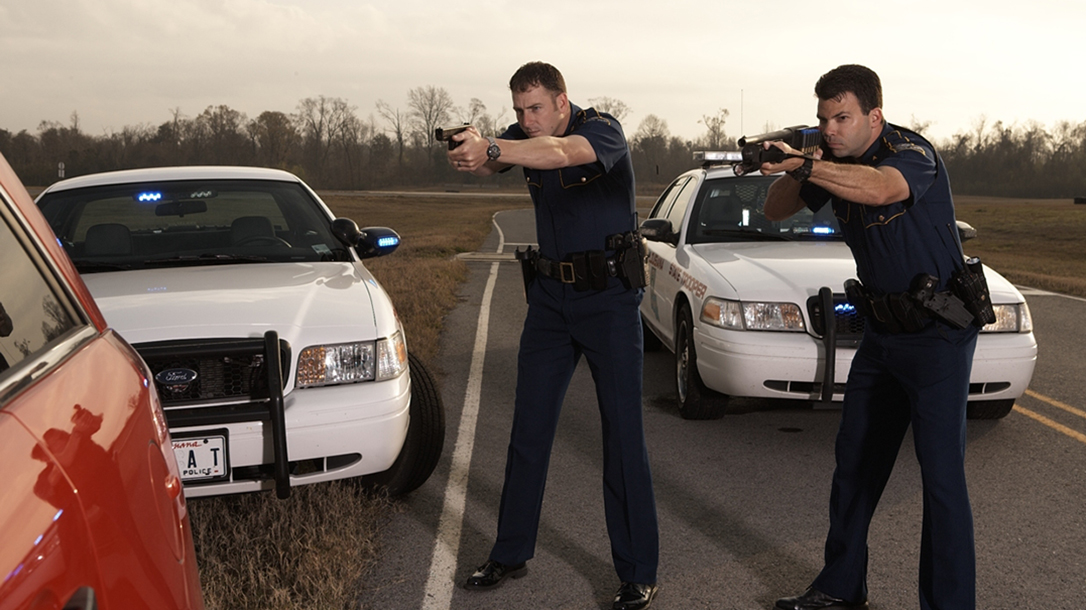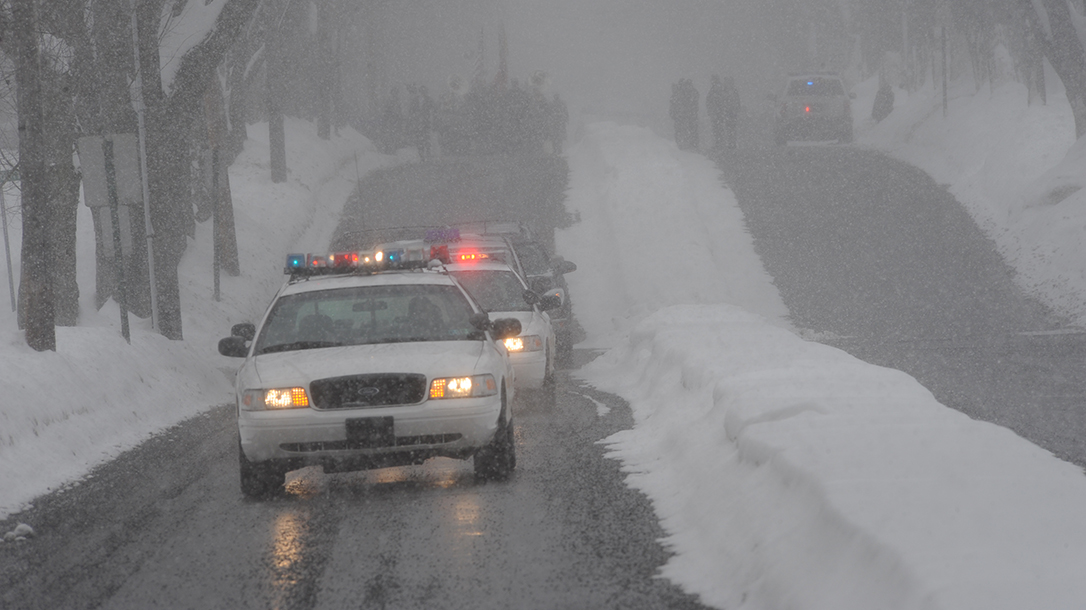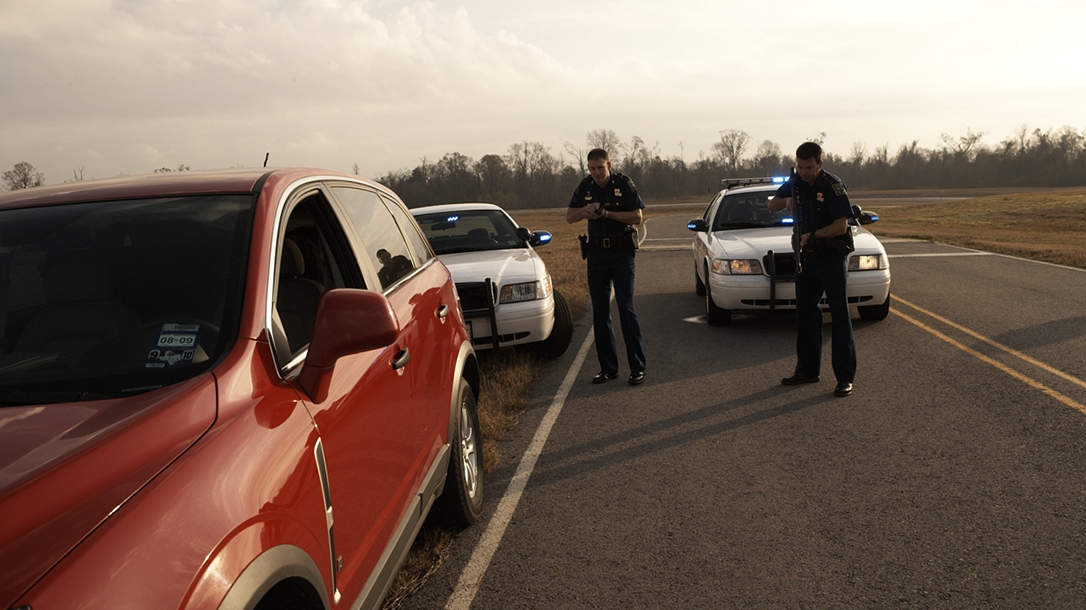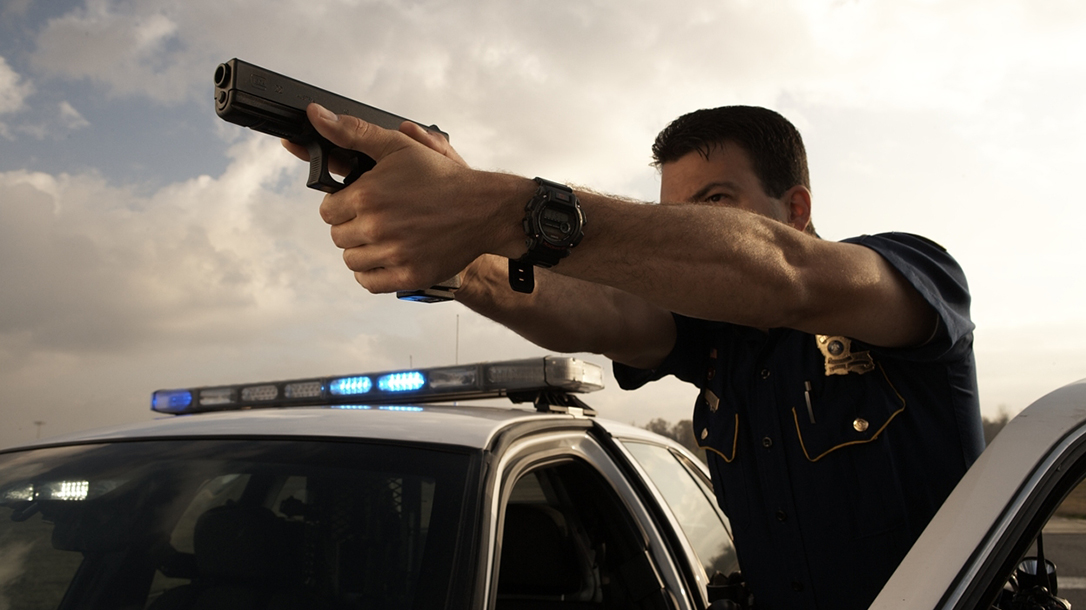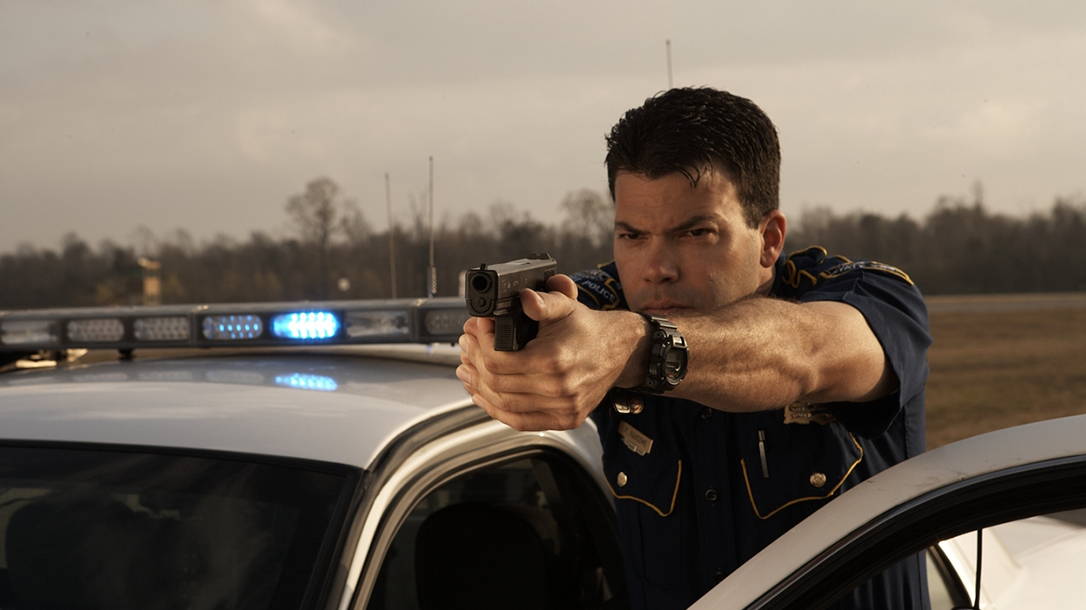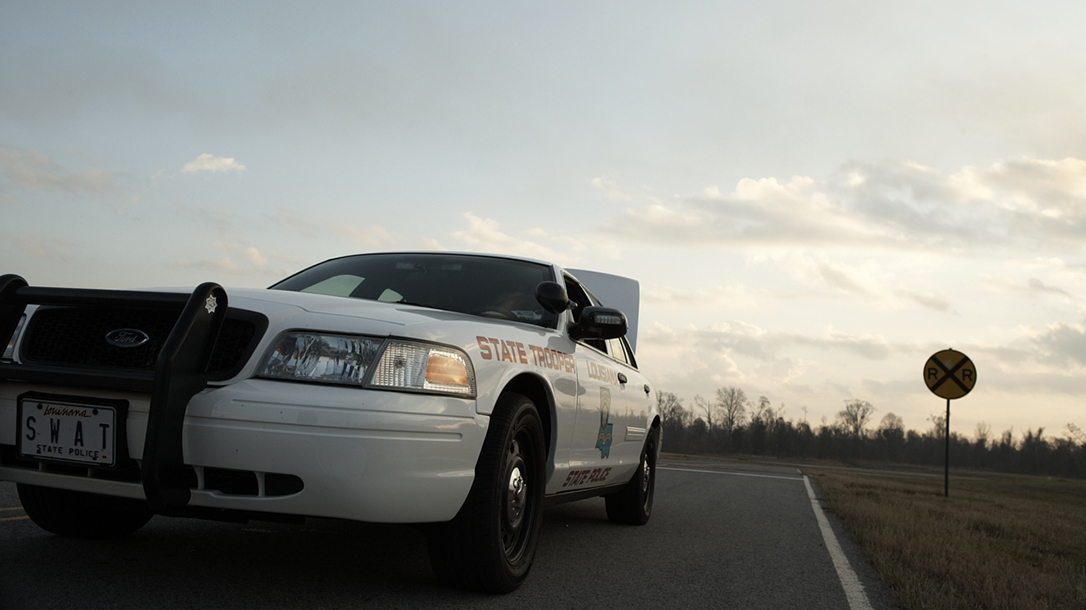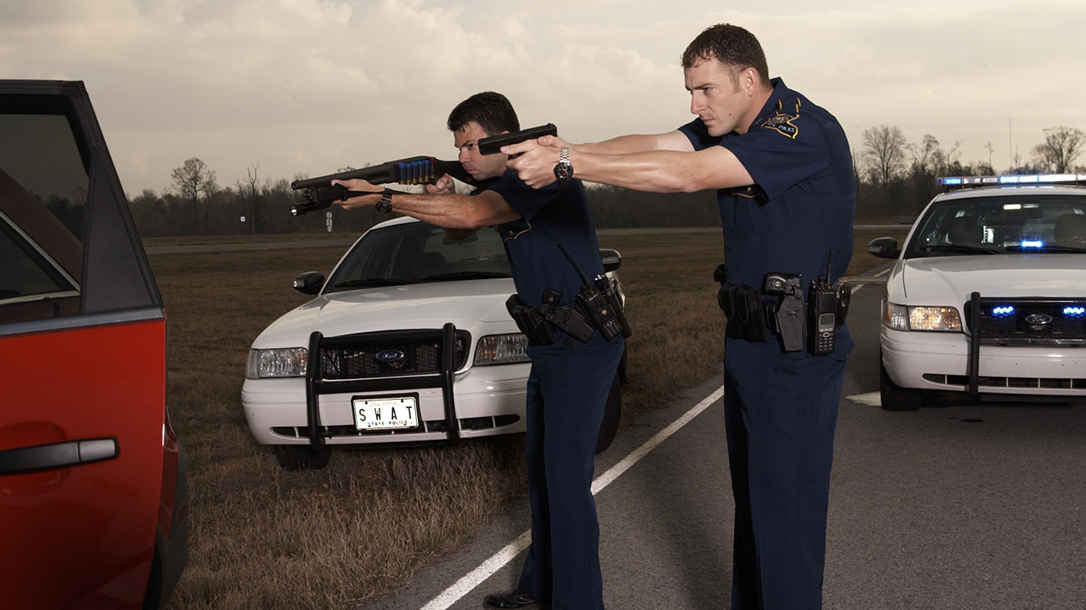I passed Sheriff Earl Lee one time on an “officer needs help” call. I was going a little over the speed limit—well, way over if you consider the conditions I was driving in at the time.
After the arrest and everything was settled, he asked me two questions. Was it worth the Mario Andretti speed and risk-taking? What words would I give him to tell my pretty little wife, Linda, that I killed myself on the way to a call that could have waited two minutes? I learned a big lesson that day and many more since.
Advertisement — Continue Reading Below
I was teaching an emergency driving class in Lee County, Georgia, on an invitation from a friend of mine, Sheriff Reggie Rachals. At that point, I was going over emergency operations and showing a few videos. After every video, there was a discussion and critique of the incident. There were a few John Waynes in the class that got Sheriff Reggie Rachals’ attention. He told them they just hadn’t found their tree.
Naturally my red-blooded police instinct was up, and I asked him about the tree. Early in his career he was assisting a Georgia State Trooper in a chase. They were attempting to set up a rolling roadblock when the suspect rammed the sheriff’s cruiser at the driver’s side front door. He was able to recover the first time, but then the suspect swerved into the back door and put him into a pine thicket. The photographs of the sheriff’s car depict what occurred. I could not see how anyone could have survived the impact.
Sheriff Rachals came out of it with a badly bruised leg and a few other minor injuries. He credited his bulletproof vest with saving his life. Therefore, when he tells folks that they are going to find their tree and shows them the photos, it makes quite an impression. After 37 years of working in law enforcement and training around the country, I have many stories and a few more to make my point here, but his is the best. I found my tree and you will find yours—let’s hope you survive.
Advertisement — Continue Reading Below
Deadly Driving
We rarely discuss our driving other than when it’s mandated, during EVOC or PIT training, or when someone has an accident or is killed. Some departments conduct training once per year; it is few and far between. With today’s budget and manpower issues, it is hard to get it in. A look at the 2012 officers-killed-in-action statistics will show how serious our driving is.
I took a look at various sources and felt that the Officer Down Memorial Page coincided with the FBI report, although there are slight deviations in each: 21 LEOs were killed in automobile accidents; five killed in motorcycle accidents; six killed when struck by vehicles; and five killed while in pursuits. Breaking them down further, you have: eight died responding to calls for assistance; six died in a single-car accident with no call; one died in training; and three died in situations where the other driver was at fault.
Thirty-seven officers out of 120. That’s 31 percent. And that might sound low until you read the rest of the list and discover that firearms were used in only 47 of the deaths, or 39 percent. Those two figures are not far apart, and we need to take time to address this issue.
Advertisement — Continue Reading Below
The Cruiser
When you are at work, you are assigned a cruiser that weighs in the neighborhood of 4,500 pounds on average. Most cruisers today boast speeds of 120 mph and even higher. From this point on, I want you to think of your cruiser as a deadly weapon. The moment you engage the cruiser in gear, you have put into motion the possibility of the use of deadly force. You carry your firearm the entire time you are on duty. You may not pull it once a day or even once a month based on your Uniform Crime Reports.
But you are in your cruiser eight to 12 hours a day. So what are the chances of you having a car accident compared to shooting someone? I worked for 37 years and never shot anyone. On the other hand, I can’t count the number of car accidents on my hands and feet.
I want you to forget that your cruiser is a way to go from Point A to Point B. Get that out of your head. All the bravado, war stories and driving as you please—they’re over. You are professionals. No, you cannot drive 80 mph on a roadway just because you can and get by with it. You are killing yourselves and others—one of those may be my wife or grandchild.
Advertisement — Continue Reading Below
Uniform Vehicle Code
Virtually every state has a standard Operation of Emergency Vehicle Statue. Most states model their policy by utilizing the Uniform Vehicle Code (UVC), which was initiated in 1926 and 1928. There have been updates since then. The section you should be fully aware of is UVC 11.106:
The driver of an authorized emergency vehicle or law enforcement vehicle may:
1. Park or stand, irrespective of the provisions of this chapter;
Advertisement — Continue Reading Below
2. Proceed past a red or stop signal or stop sign, but only after slowing down as may be necessary for safe operation;
3. Exceed the maximum speed limits so long as he or she does not endanger life or property; and
4. Disregard regulations governing direction of movement or turning in specified directions.
Advertisement — Continue Reading Below
The foregoing provisions shall not relieve the driver of an authorized emergency vehicle from the duty to drive with due regard for the safety of all persons, nor shall such provisions protect the driver from the consequences of the driver’s reckless disregard for the safety of others. (UVC 11.106 revised 1968)
What is due regard? How any reasonable person operating an emergency vehicle under similar circumstances would act in the same manor. It is clear in the UVC that you must protect all persons around you when you are in emergency mode. You must be within your department’s policy. If you are not, from the legal liability end of the spectrum, you have put yourself out on a limb. You have nothing to hang your hat on. In any scenario, you must abide by the department procedure—even if the policy is flawed, you will be covered.
Avoiding Tragedy
On October 28, 2011, an armed robbery call was dispatched to officers of the Albany Police Department. Officer Terry Flemming, along with fellow officers, responded to the call. Terry was pursuing the suspects traveling south on a main thoroughfare. Another officer approached the intersection simultaneously at 90-degree angle to Flemming’s direction.
Advertisement — Continue Reading Below
After missing a stop sign, the two cruisers collided, and Terry’s cruiser was sent into an oak tree. The car erupted in fire. Bystanders assisted her out of the cruiser. She was transported to the hospital, where she died shortly thereafter. The secondary officer sustained minor injuries. Terry was only 36 years old and had been married just six months. She left behind her husband and three children.
This case was burned into my mind because it occurred the Friday before I was to come in to teach emergency training. We canceled the training, and I came in the following week. Of the hundreds of classes I have given on emergency driving, this was the hardest I ever did. The officers were solemn yet attentive. The secondary officer was in the class one day. It will be years before the hurting will stop in that department.
Advertisement — Continue Reading Below
First Responder Takeaway
I have seen many officers seriously injured, unable to carry on a decent quality of life. In addition, I have seen many die uselessly, and I have seen many families left alone, and I can’t fix it. I hope you or future generations can.
If you only take one thing away from this article, let it be this: Getting there two minutes earlier may make a difference, but it usually doesn’t. There were two questions that Sheriff Lee asked me. Was it worth the speed and risk-taking? What words could I give him to tell my wife if I killed myself to get to a call that could wait two minutes? I didn’t have the words at that time. Nearly 40 years later, I still don’t.
This article was originally published in October/November 2016 issue of “Guns & Weapons for Law Enforcement” magazine. For more information, visit outdoorgroupstore.com.
